Ancón: the quintessential spa in North Lima
Hello to all! I hope that all of you are well. I’ve been silent for many days, but now I have returned with renewed energy and I want to continue sharing each one of my experiences that happen during the events and places that I have been to throughout my life.
Ancón: the most beautiful spa in North Lima
Today I am going to tell you about the heatwave that has hit the place where I am writing this entry, and with it also come memories of my childhood and one of the places that I would go to at least once a year, either with my uncles, or cousins, or sister, or everyone together.

Ancón?
In order to begin to tell you about this spa in Lima, I want to share with you the fact that I am from North Lima, so I know that almost always people go during summer (which is from December to March) to a beach in either North or South Lima. Whilst it is true that nowadays the most popular beaches are those in the south of Lima, we cannot erase the historical value and touristic potential of the spa in Ancón, a spa in northern Lima that is full of history, full of a beauty that, at the time, competed toe-to-toe with the most exclusive spas in South America. Today in Ancón, everybody succumbs to its way of enjoying the summer in Lima. Similarly, it is not only a place where beach tourism was generated, but also a place with so much history of my beloved Peruvian nation such as, for example, the famous Treaty of Ancón, which put an end to the bloody 19th century war between Peru, Chile and Bolivia.
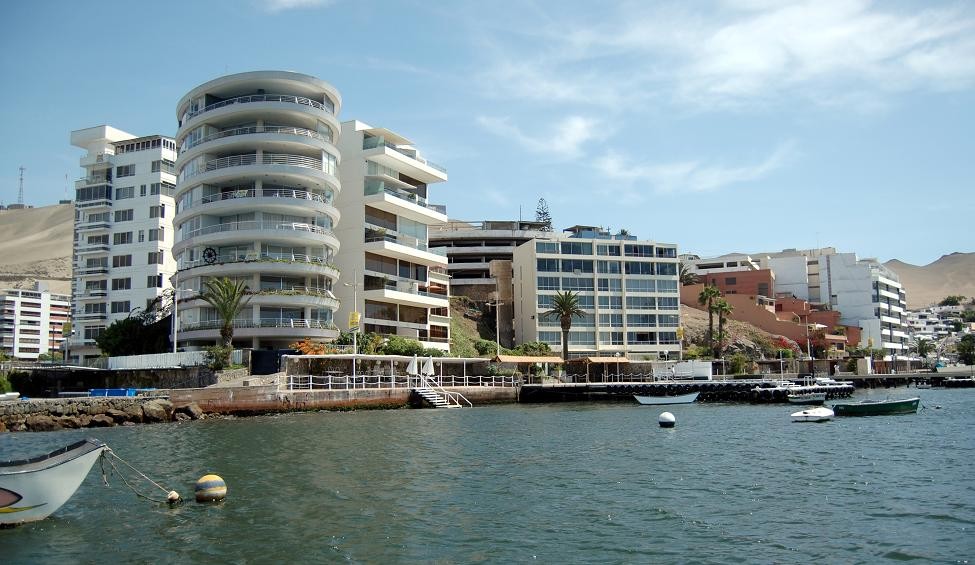
Without further ado, let us begin with this homage to the spa in Ancón.
The location of Ancón
Ancon is found around 40 kilometres in distance from the centre of Lima, and it is without doubt a beautiful and unique place. Nowadays, this place forms part of one of the districts of Lima, another place that strikes me. Additionally, I tell you that Ancón is not only a beautiful place, but also a place where different cultures have been converging since pre-Hispanic times – or rather, pre-Columbian times – such as the Chancay culture. Furthermore, during the times of the colonial era there was a small, simple cove for fishermen and, to give you more information I’ll tell you that during emancipation times there was one of the ports where the libertarian teams disembarked in their search for the long-awaited independence of Peru, which was achieved in the year of 1821 (I’m taking the opportunity to tell you this so that you will realise that it is already less than five years until the bicentennial anniversary of the independence of Peru).
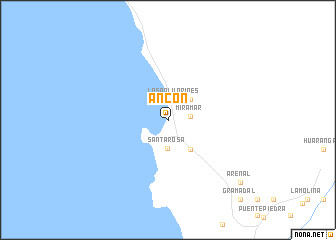
And last but not least, it is in this spa where the discussions to end the Pacific War (that I told you about between Peru, Chile and Bolivia) were carried out. The start of the 20th century is when Ancón already became one of the hot spot spas for people from Lima and visitors to Lima. I am going to tell you about this and much more throughout this simple but interesting homage to Ancón.
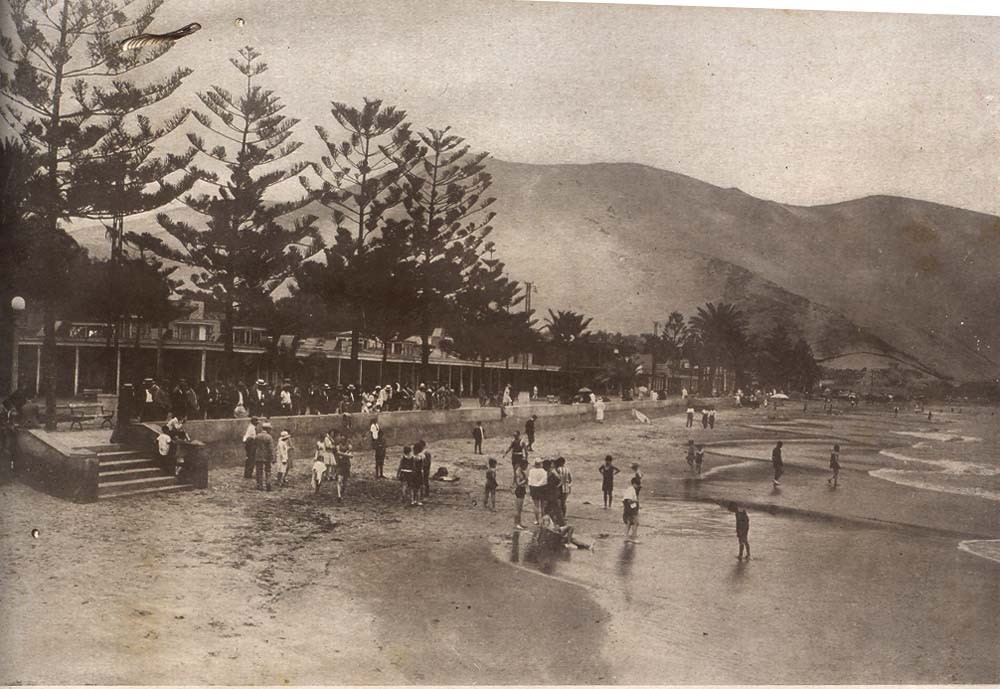
The transport point to get to Ancón
First of all, I want to tell you that my city is growing in an exorbitant way, and Ancón is now a part of it, which is why the public transport of Lima now connects the centre of Lima with, for example, the Ancón beach area. Here, for example, are the famous buses from Ancón that are white with a blue stripe in the shape of a wave, and there is another yellow line that I used to get to Ancón at the weekend, passing through the north Pan-American highway.
Ancón has a lot to give, above all its rich marine life that it holds for all of us. As many of you will already know, the Peruvian sea is one of the richest in the world, and this little piece of Peru is perfect as a window of representation into the rich value of the sea that my beautiful Peru has.
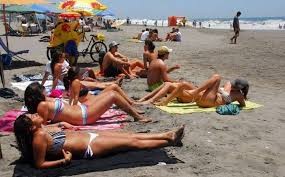
The ‘Lima of grandparents’ is already becoming an age of the past however; I can tell you that in its time the traditional proclamations arrived to this same Ancón. Who were they? Well, nothing more and nothing less than the people that went out to the streets with special songs used to offer their products. This I have not experienced, but I tell you about them as a detail of what I was able to discover.
Hub of cultures in Ancón
There is something that I have experienced, and it is that Ancón has been changing throughout its history. There is something that gives a special signature to this spa, and it’s that it has been able to greatly benefit in becoming, or maybe always being, a spa for pedestrians instead of giving space to cars. When I think about this, what comes to mind is all the change that has had to happen to the busy Costa Verde of the districts of Miraflores, Barranco, San Isidro, Magdalena and San Miguel can you imagine what that area would look like if it had had the same luck as Ancón? I know that I am a dreamer and to dream costs nothing but, the fact that thinking about each one of these changes that we could have to benefit the inhabitants of Lima brings, without doubt, a big smile to my face.
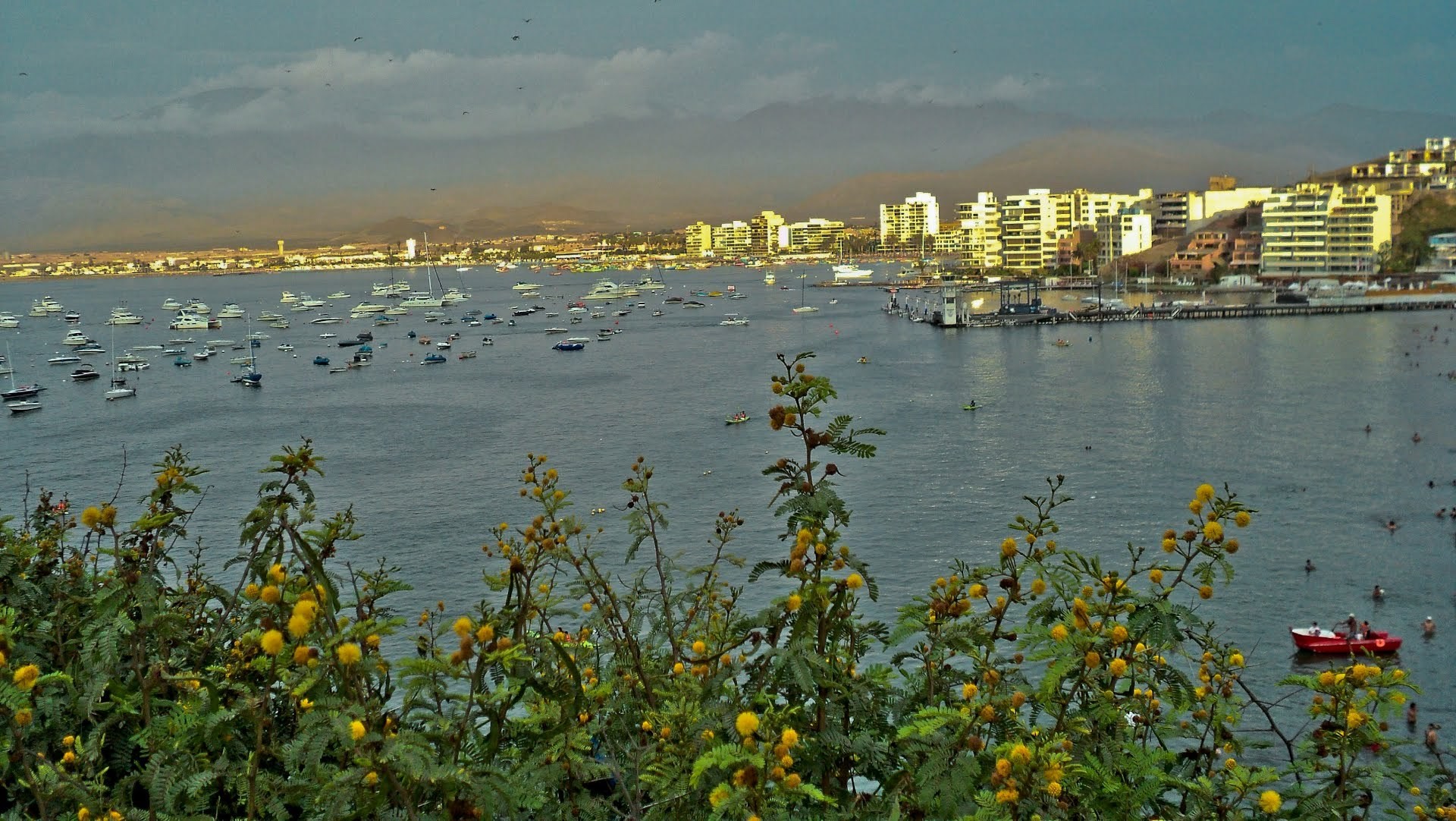
Ancón is a spa with space for its neighbours and visitors to be able to go for a walk through its spa that today has black and white floor tiles, a space divided with its houses and buildings that give it a unique touch that makes us realise that these parts have a great past.
As I am already telling you, Ancón is one of the spas in Lima that has an infinite history, and these stories go back to periods from thousands of years ago, with beautiful landscapes – that have been transforming throughout time – and its enviable marine ecosystem.
During the 20th century, the spa from Ancón was able to become one of the most important spas for the people of Lima to spend their summer there and relax.
Maybe many of you may be asking where the word “Ancón” comes from. Well, let’s start by clarifying this doubt: Ancón, according to some historians, means “cove”, which means to say a tranquil place where one can relax, like a bay. In the case of Ancón, it is a closed bay.
Origin of the word “Ancón”
There are also other theories for the origin of the word “Ancón”, one of which is, for example, is that Ancón means ”hidden retreat”. As you can imagine, there are many stories and even legends that can be told, as Ancón is found between the sea and the desert.
Its waters are tranquil and, thanks to this, different populations were able to settle to be able to take advantage of the rich shores that this magical place has. Despite being located between the coasts of the Peruvian sea, Ancón has the advantage of having calm and relaxing waters thanks to the formation of its mountains that are a kind of pillar that protect the area from big waves, which is one of the things that I remember most about Ancón and is why, when I was a child, I came here many times with my family, as well as another spa called “La Punta”, but I will tell you about this place at another opportunity.
Ancón is also found in front of the mountains, one of which, for example, is Pasamayo, which is where the desert begins. Some might say that there is no biodiversity here, but once you go to the sea and can see all that the fishermen bring in with their nets, your jaw will hit the floor.
Its museum and history
In Ancón there is also a museum, where you can appreciate and learn about all the history behind the ancient Peruvians that decided to settle in these parts for the tranquillity of its waters, and for the rich marine life that you can find here and, above all, you can discover other cultures such as, for example, Chavín, and others like Chancay and even the Inca culture.
The museum in Ancón (Museo de Ancón) was inaugurated in the year 1993 thanks to an agreement that was signed between the prestigious Lima Art Museum and the board of trustees of Ancón. Thanks to these efforts, you can see recreations of pre-Hispanic burial sites, textiles and ceramics from each of the cultures that I mentioned earlier.
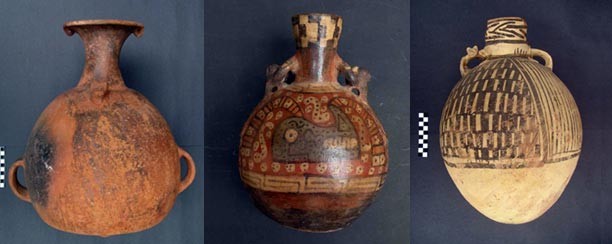
In Ancón, the first archaeological works refer to a cemetery, that they were able to discover here, and not only that but also to different hunters and harvesters that lived here.
All hands on deck!
The Peruvian coast is a marvel for all lovers of archaeology and the search for new things that can tell us about our ancestors. Peruvians generally understand key points from the cemetery era – also known as the necropolis from the Paracas culture, this can be found in the south of Lima, in the Inca region. However, I can tell you that Ancón is not far behind, and here you can also find a great legacy from human remains that were excavated during the 1870s. Thanks to the efforts and dedication by German archaeologists that came to Peru and fell in love with this area of Lima.
Regrettably, nowadays these investigations have been frozen due to the invasion of settlers that have gradually settled into this new Lima that is growing in leaps and bounds and won’t stop at nothing. However, I think that something we can do in this present to be able to counteract this abandonment and invasion that this important Ancón necropolis is suffering.
Now that we have already talked a bit about the pre-Columbian period, we are going to take a journey to the colonial period in Ancón. In those times, Ancón was a territory that pertained to the reduction of the Carabayllo, Ancón was a small hamlet of fishermen where these Peruvian catered to the inhabitants of the Chillón valley.
In addition, I am also going to tell you about how Ancón became an alternative port to the most important port in Peru – do you know which one that is? Well, nothing more and nothing less than the gigantic port of Callao.
Emancipation Period
Already at the time of the emancipation, it was in Ancón where Don José of San Martín disembarked to begin the process of the Independence of Peru. Now you understand why there is so much history! And not only this, but I will tell you that, as San Martín entered on this side, precisely the same side where Simón Bolívar, another liberator from the north, departed. When arriving in Peru, Bolívar took away the importance of Ancón as a port, and another place along the coast of Lima became his favourite. I refer to nothing more or less than the other spa from Chorrillos, which is now a district that is very close to one of the most beautiful places in Lima where I lived for a while: the bohemian district of Barranco.

Already then in the age of independence of Peru, the spa in Ancón returned to being the main focus in another period in Peru, this one is around the years of 1836, when, in those times, the Peruvian-Bolivian confederation was formed. In those year, the Chilean army, commanded by Manuel Bulnes, decided to disembark at Ancón to be able to put an end to this important union of nations.
The arrival of the times of glamour
We continue with the history of Ancón, and now we are in the final years of the 19th century, when the president, Balta, ordered the urbanisation of Ancón, and that is how the houses and first streets with their names, such as, for example, Abtao and Dos de Mayo, arrived. As you can see, it is quite related to everything to everything that was the fleet and places related to the war that Peru had with Spain, also known as the Battle of the Second of May, when Peru consolidated independence, not only of Peru but also of the other new nations of South America that were formed in the 19th century.
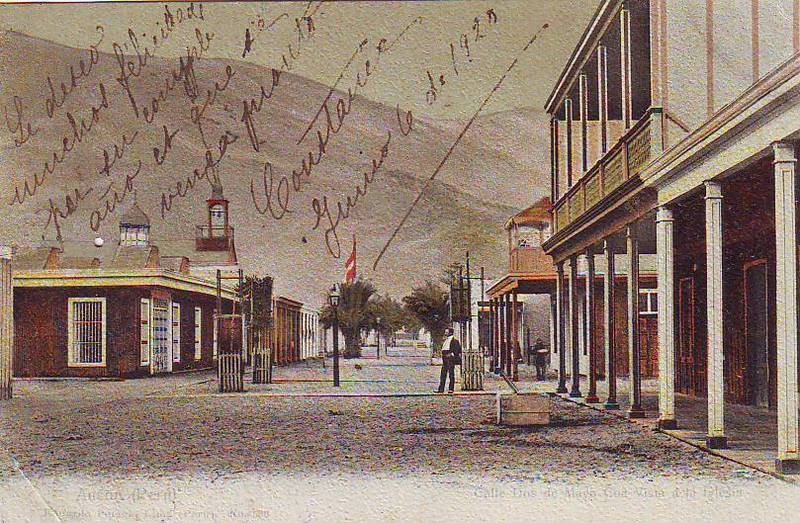
This period of urbanisation was the one that converted Ancon into a place of rest and recreation. A place where the elite people of Lima could come and at peace from the ruckus from Lima, a place to relax. They say, for example, that there was such a boom during those times that the assembled houses from the United States and from Europe were brought in by one of the most prosperous men in Peru of those times, such as Henry Meiggs. Even more notable people, such as Ricardo Palma, the very author of the book “Peruvian Traditions”, who came to have a house in the northern resort of Ancón.
This new wave of prosperity was so powerful that, by the year 1874, the district of Ancón was officially established. Already in those times was a contrast being generated that is still seen today in Lima. On the one hand, there were the grand houses of the wealthy people of Lima and on the other hand, in the highest parts of the mountains, were the houses of the fishermen. This consequently resulted in the slow development of the urbanisation of this resort, including the trees such as the known ficus trees.
Additionally, there is another fundamental fact that meant that the resort in Ancón could become a district, and this, without doubt, was the long-awaited train that connected Ancón to the city of Kings (Lima). This project was carried out with the objective of generating exportation of the landowners from the neighbourhood of the Chillón river for their sugar and cotton products but, as nobody wanted this, this also brought consequences, such as the arrival of many visitors, little by little, from the capital, who made use of their wagons.
Times of war
During the war with Chile, Ancón regrettably paid for its involvement, which practically caused Ancón to be destroyed by the “Estrella Solitaria” army, as there had to be many discussions – which were held in Ancón – between both troops to end the war in the Pacific.
On the 20th of October, 1886, it was in Lima where the peace treaty “Treaty of Ancón” was signed.
Once the war in the Pacific was concluded, everything that was destroyed was being reconstructed, and it was then when the Peruvian state gave the railway that connected Ancón to private companies. After a couple of years of development, Ancón became the focus of one of the casinos that was constructed in the resort. Bit by bit, new buildings such as schools, fire departments, public services and much more were constructed. Development had once again arrived to Ancón.

Everything began to flourish again
There is a period of time in Peru that is known as the Aristocratic Republic, which was characterised by times when the elite governed to their grace and whim, especially the elite from Lima. It was precisely in those times when the presidents of back then wanted to make Ancón into one of the favourite resorts in South America, to somehow make it into strong development competition to the already known as the Viña del Mar in Chile and Copacabana in Brazil.
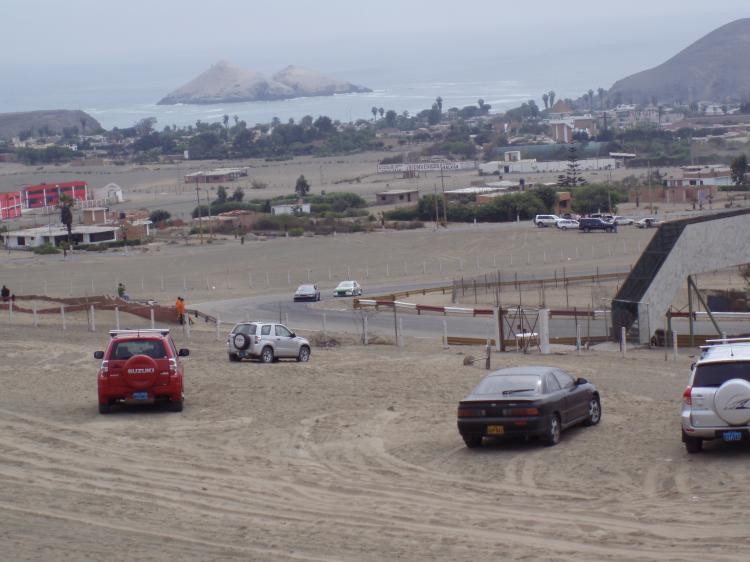
At the beginning of the 20th century, you could already see the breath of fresh air in Ancón, and visitors arrived by train. Furthermore, theatres and cinemas were being created in Ancón, there was even a seaplane base run by President Leguia, the president who starred in the first century of Peruvian independence.
Over the years, the construction of the North Pan-American Highway began, the route that is used currently and brings many visitors. This step into modernity began to bring more and more holiday-makers from Lima.
The development caused Ancón to be expanded, and the resort developed to what is now the beautiful beach.
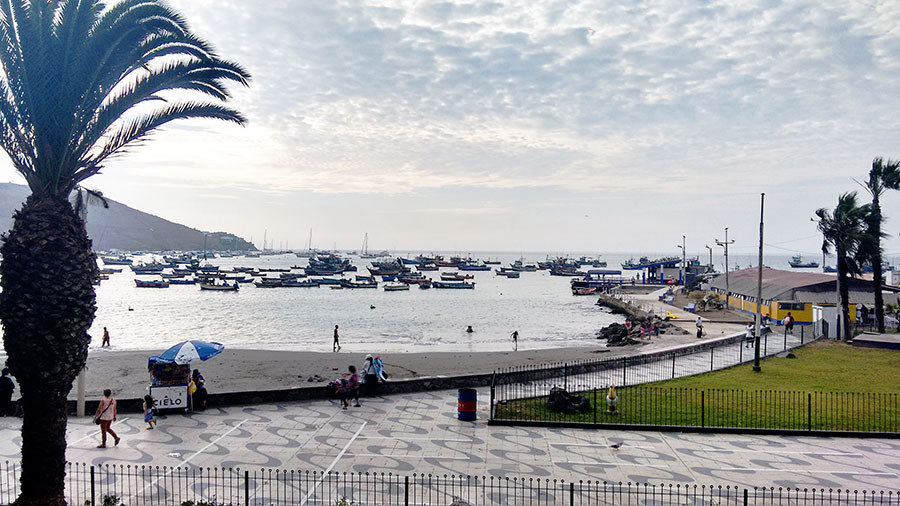
Moments of glory in Ancón
With the arrival of the decades of the 40s and 50s, Ancón began to grow and the buildings that you can now see in the resort were, bit by bit, built. You can also see the first bikinis that came to Lima and the modernisation that was forged in Ancón. Additionally, the yacht club was also created, converting with it the meeting point of politicians and characters such as the singer, Chabuca Granda, as well as the middle and upper class, all the wealthy sectors began to enjoy the glamour in Ancón.
The casino of Ancón was even visited by Ernest Hemingway and also by the actor Mick Jagger from the legendary band, the Rolling Stones. As you will have realised, it became a reference point for different prominent people and foreigners during this tourism process.
Ancón began to change its face and practically became the Rio de Janeiro for the people of Lima however, over the years, despite the years of elite glamour there was no impediment for Ancón to slowly reveal a new reality. Workers and migrants from many parts of Peru, such as Ancash, began to come to Ancón to find a new future.
Hub of cultures in Ancón
And so Ancón became a hub where the most affluent people from Lima met with those who had just arrived as a result of emigration. What was happening in Ancón was also beginning to happen in all of this part of today’s great Lima.
Now, between the 60s and 70s, a music festival began to be created that brought together nationals and foreigners and became another feature of this area. Nowadays, this charm no longer exists, but what endures is the enjoyment of the smell of the sea, of getting on boats, of sunbathing a bit and of riding a bicycle through the resort, they are things that have not been lost, that social life that today has been representative of the people from North Lima that continue to breathe life into Ancón.
Ancón is part of Lima and part of Peru, it is a resort that has been opening itself to the world, for all who want to visit it. What I like the most about Ancón is that there is no restriction for anybody that wants to visit it. I am part of this new populous multitude that has come to visit in the summertime since, as I have told you, I am from North Lima.
Arriving at Ancón is to feel free, its to buy a Donofrío ice-cream and to sunbathe and relax. As we have been able to see, the sea is one of its important assets, but this is not all today. There are also small islands where you can find guaneras birds and even sea lions, it’s a gift of nature, a historic past and a vivacious present that is slowly building in the Ancón that refuses to disappear.
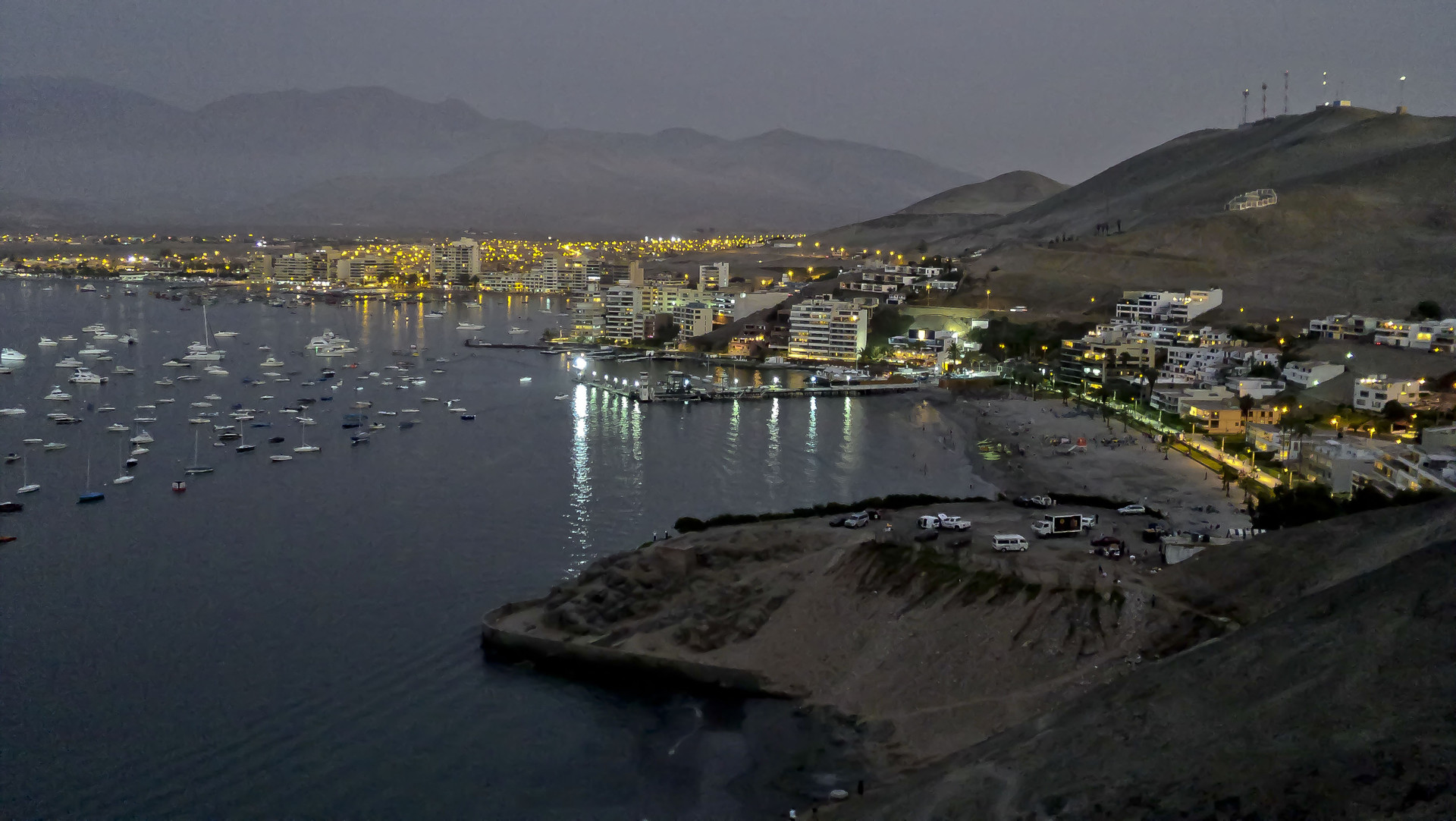 Source
Source
Walking through Ancón is also a way to see the remains of its past through its architecture. I encourage you to go and see this new reality that is present and so close to the centre of Lima. There is no excuse, as you will realise, you can take a bus or come in your own car, I assure you that you are going to have a marvellous experience.
If you want to eat a delicious Peruvian ceviche, what better than to do so on the beach, what better than to do so in Ancón, with fresh fish just out of the sea and the impossibility of eating without licking your fingers?!
I hope that you have liked this homage to Ancón and that you no longer have any doubts and that you will come to see the most beautiful and quintessential spa in North Lima. Many thanks for reading this reference, and see you in another adventure about my beloved Lima! Until then.
Photo gallery
Content available in other languages
Want to have your own Erasmus blog?
If you are experiencing living abroad, you're an avid traveller or want to promote the city where you live... create your own blog and share your adventures!
I want to create my Erasmus blog! →




























Comments (0 comments)